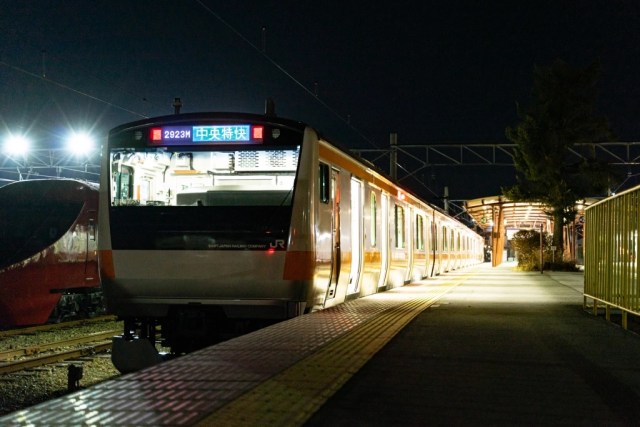
Oversleep and miss your stop on this train and you’ll be stranded in the middle of nowhere, which might just be the start of a beautiful adventure.
One of Japan’s favorite places to catch a few extra Zs is in the train, since if you can grab a seat, the soft swaying and rhythmical sounds as the carriage makes its way down the tracks can be very relaxing. “But won’t you sleep through your stop?” you might be asking, but this isn’t such a concern to most people. Living in Japan, you spend so much time riding trains that your body starts to get used to the time between stops on your local commute or leisure time circuit, and you’ll usually wake up naturally shortly before you arrive at your intended destination, and even if you do oversleep, if you live in a big city like Tokyo, trains run frequently enough that getting off and making a U-turn ordinarily isn’t such a hassle.
However, you might have noticed that we said you’ll usually wake up and that making a U-turn ordinarily isn’t a hassle. But if you were really sleeping deeply (say, because of a busy day, or maybe one too many Asahi Super Drys), what’s the absolute worst train in Tokyo to oversleep on and end up at the end of the line for?
This one.
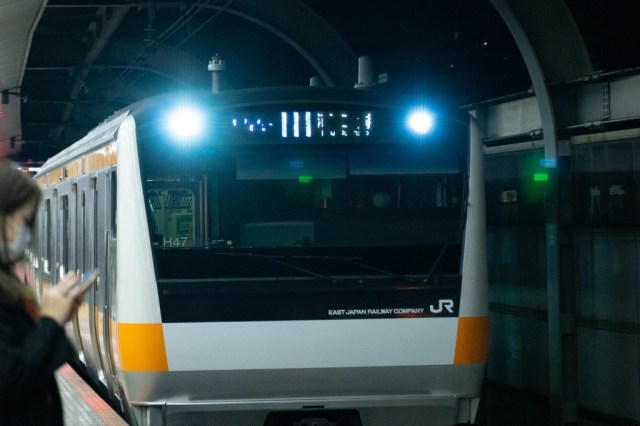
That there is a train on the JR Chuo Line, which runs across the center of downtown Tokyo, connecting Tokyo and Shinjuku Stations. But the Chuo Line keeps going west out of downtown, and this particular Chuo Line train, which departs Tokyo Station’s Platform #2 at 7:12 p.m. on Saturdays, is the one you want to keep from sleeping too soundly on.
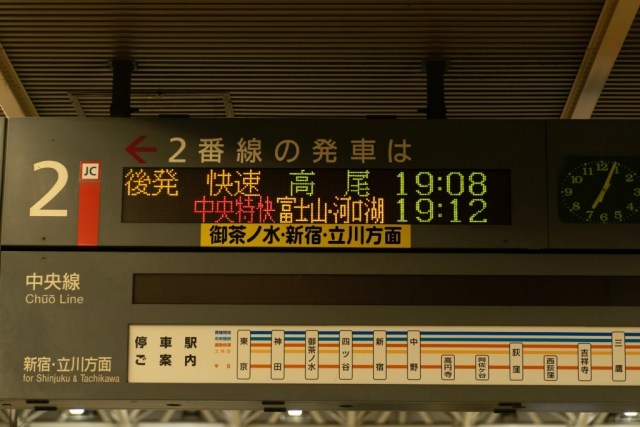
Why? Because this train goes all the way to Kawaguchiko Station, which is two stations even farther away from Tokyo than Mt. Fuji Station, and by the time it arrives, there are no trains out of the area until the next morning.
So naturally, we hopped on the train to ride it all the way to the end.
▼ The route from Tokyo Station to Kawaguchiko Station
It takes about three hours to make the 114-kilometer (71 miles) trip, but since the train passes through downtown and the west Tokyo suburbs, there’s no fancy ticketing or seating system like you’d find on the Shinkansen, nor any attendants coming by to make sure passengers have gotten off where they wanted to. For the first leg of the journey, it feels like any other Tokyo train, and on a Saturday night there were plenty of other passengers making their way around town.
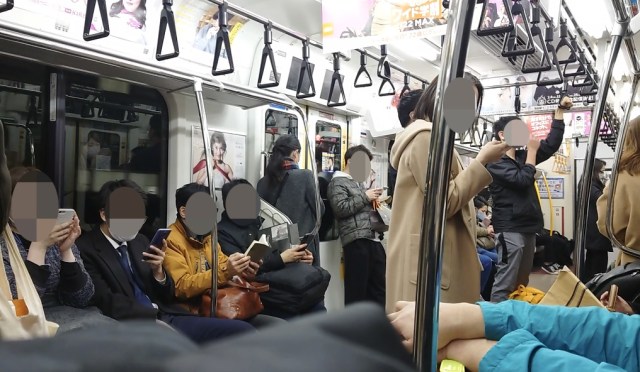
But after we passed Shinjuku and headed into the suburbs, the train gradually began emptying out. Fewer people-watching opportunities and the fading lights of the big city meant less visual stimuli to keep our minds focused, and soon enough, we felt our eyelids getting heavy and we drifted off to sleep.
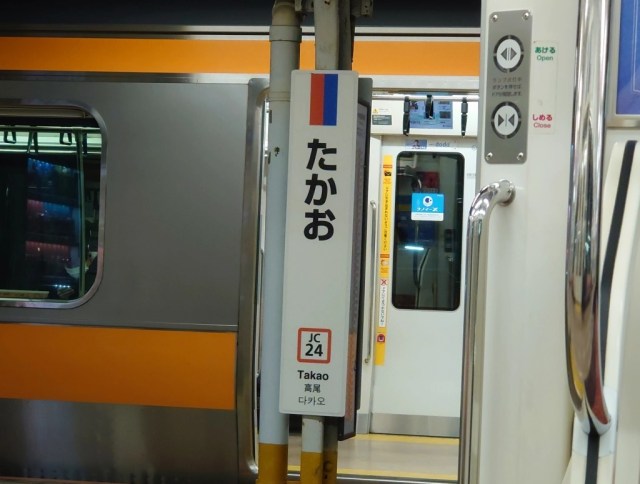
By the time we got to Takao Station, in the foothills near Tokyo’s favorite day-trip mountain hiking trails, it was almost completely dark outside, and there were just 5 to 10 people on each of the train’s 10 cars.
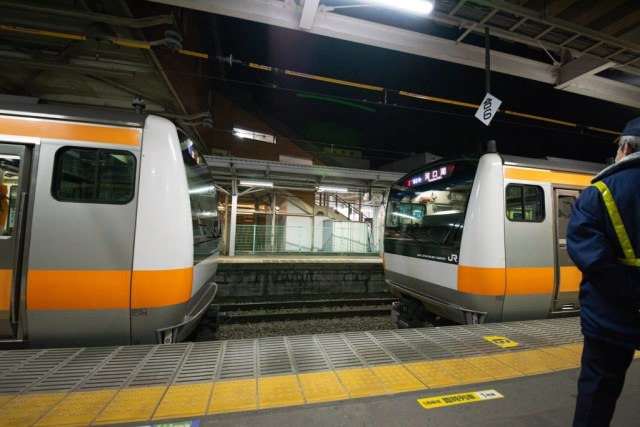
We had even more personal space once the train got to Otsuki Station, in Yamanashi Prefecture, at around 10 o’clock. Here, the train splits into two sections, with only cars 7 through 10 continuing on to Kawaguchiko, and now there were only about 10 people on the entire train.
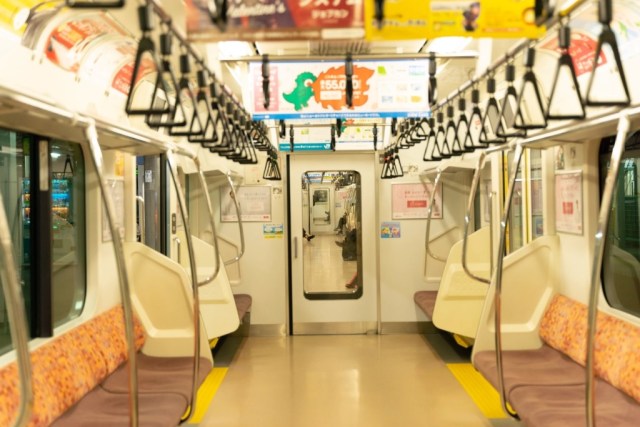
▼ You know you’re far from home when straight-up “Mt. Fuji” shows up on the map.
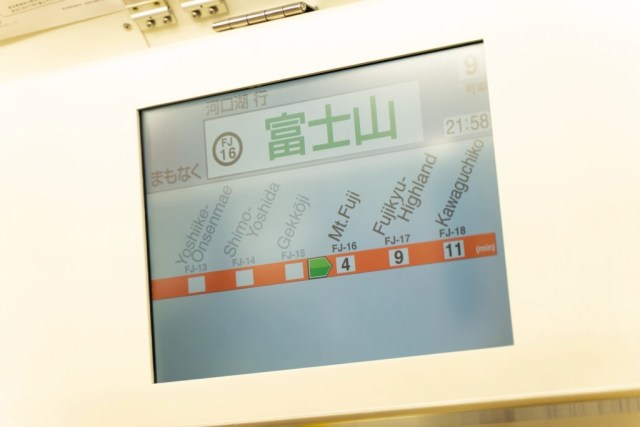
Finally, at 10:10 p.m., we pulled into Kawaguchiko Station. The train was now down to only four passengers, and the other three, presumably locals, quickly hurried for home as we looked around and snapped some pictures.

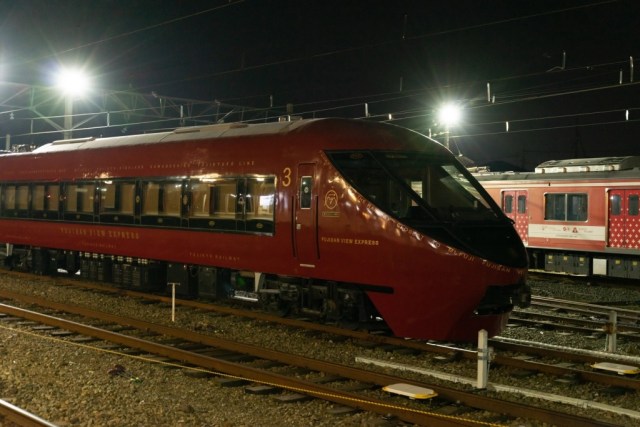
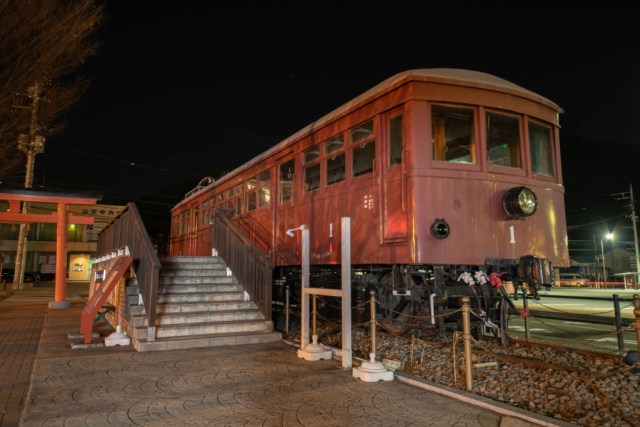
Kawaguchiko Station itself is charmingly rustic, and thanks to its proximity to Mt. Fuji and Lake Kawaguchi it’s no doubt filled with lively tourists during the summer travel peak. At 10:15 on a freezing-cold night in February though? Not so much.
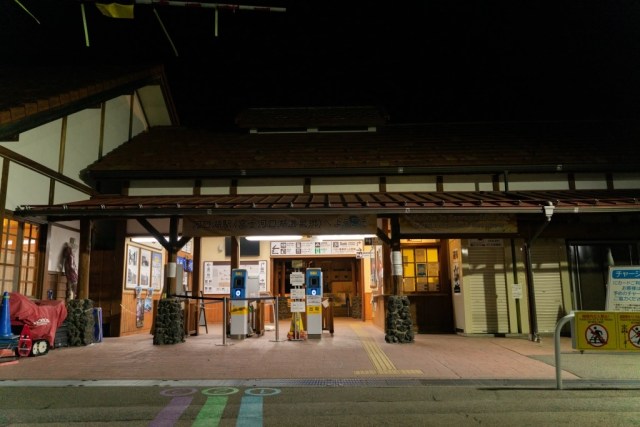
We didn’t see anyone in the arrival lobby that the automated ticket gates lead into, and it took a bit of searching before we could find even a single station employee.
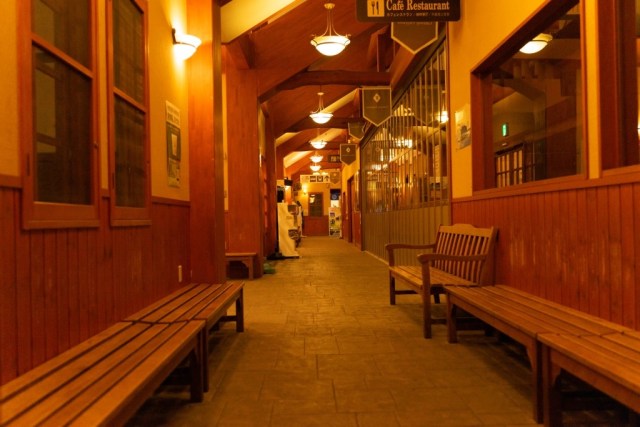
Like we mentioned earlier, at this time of night there’s no train back to Tokyo, or anywhere for that matter. After the 7:12 departure from Tokyo arrives, there’s just one other local train that comes into Kawaguchiko Station, and then the building shuts down for the night.
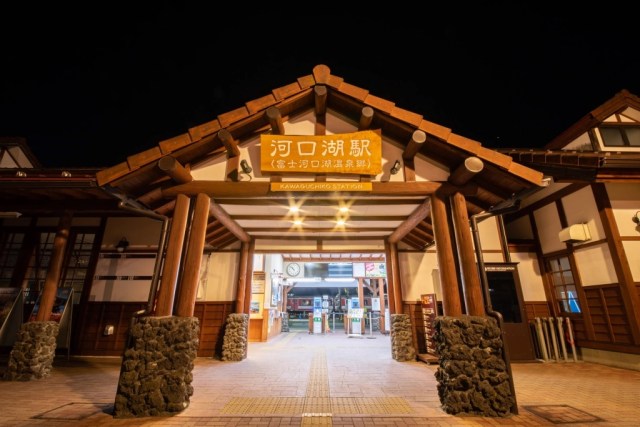
Unfortunately, this means that if you do somehow end up here by accident, you’ve now got to find somewhere, or someway, to spend the night, since loitering in the station until morning isn’t an option. Hopping a taxi back to Tokyo probably isn’t going to happen either, considering how empty the town’s streets are at this time of night.
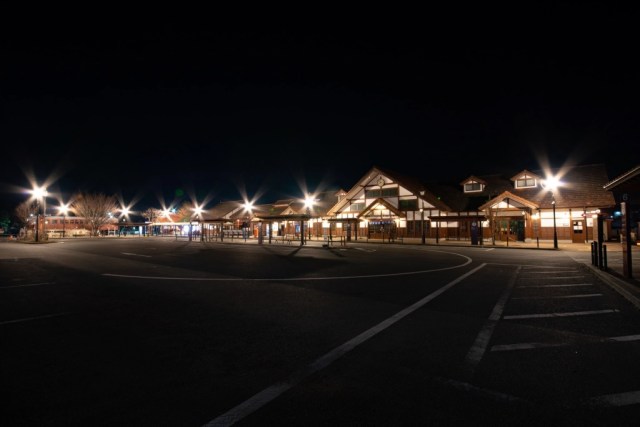
So we whipped out our phone and ran a search for nearby cheap chain restaurants, hoping to find a fast food joint to kill some time in. We had absolutely no results for Yoshinoya or Matsuya, but there is one branch of Yokohama-based beef bowl chain Sukiya, which is 1.6 kilometers from the station.
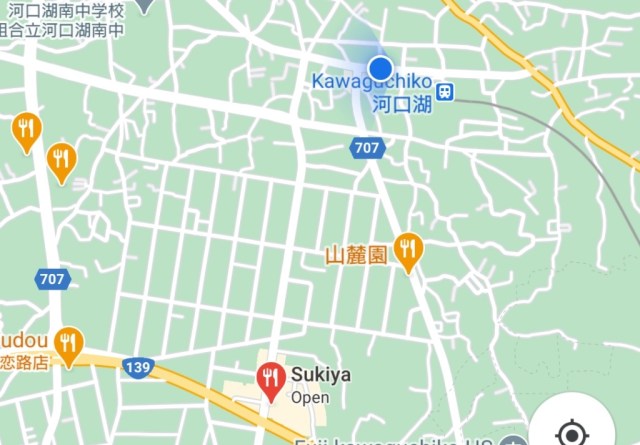
So it was time to start walking. We exited the station and hung a left, and it wasn’t long before we were in a residential neighborhood. However, none of the lights were on, and the only people in town who seemed to be awake were the clerks at the two convenience stores we walked by.
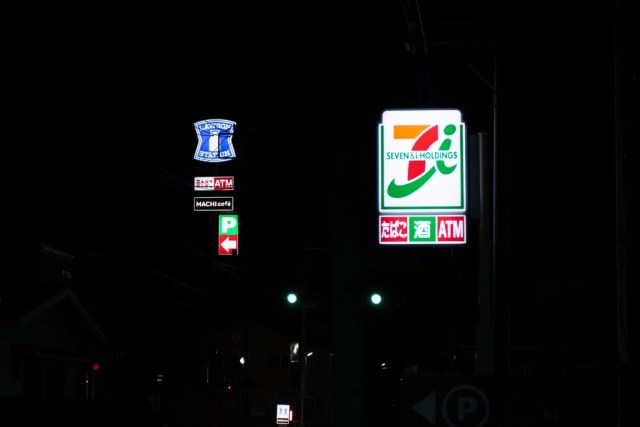
Living in Tokyo, it’s normal to find yourself wanting the occasional break from the noise and congestion. Here, though, we had the extreme opposite, with large, lengthy pools of inky darkness between the sparse street lights.
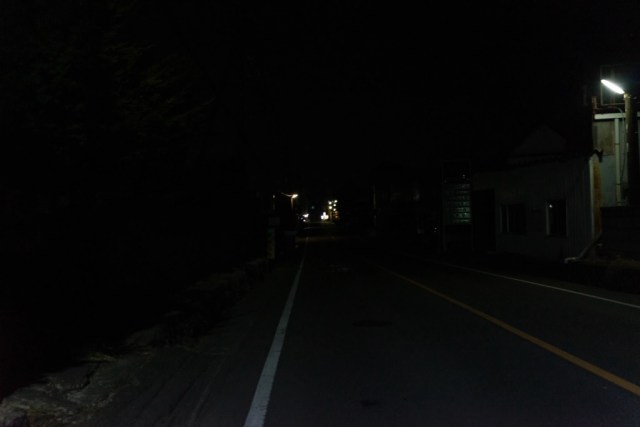
Occasionally we’d come across a supermarket or one of those casual department stores you’ll find in rural Japan, with its lights off and shutters closed for the day.

▼ The sign says “Super Cheap Market,” but we have no idea what they sell.
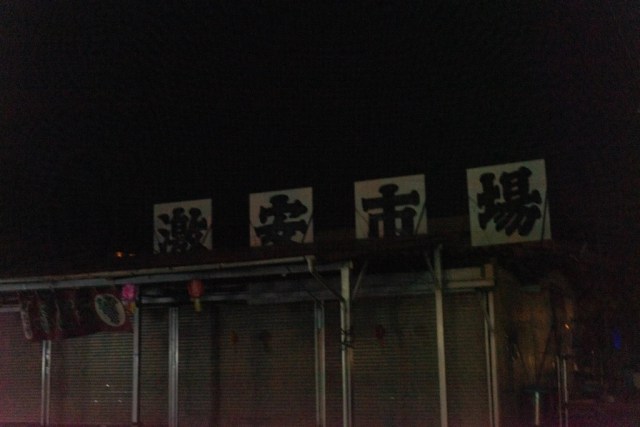
Eventually, we arrived at Sukiya, which was still open and serving at midnight. If you were looking for a place to sit down inside, this was pretty much the only option we’d found so far.
▼ The sign says “Sukiya,” but it’d be just as accurate if it said “oasis.”
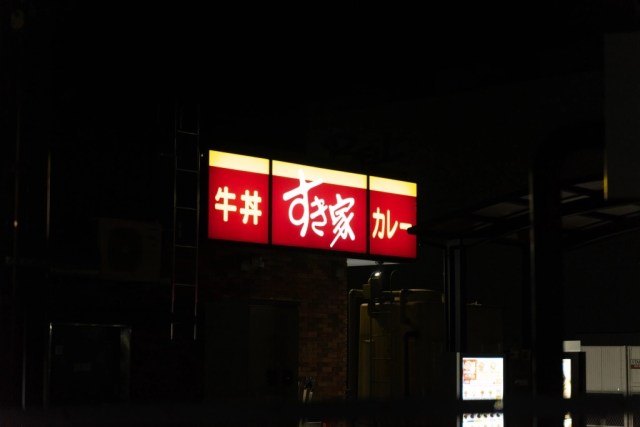
Most restaurants still open at this time of night are pretty accommodating of customers lingering over their meals, but still, you can’t sit there nibbling on one beef bowl for five hours until sunup. So since Kawaguchiko Station is near Lake Kawaguchiko, we decided to do some sightseeing and go see the Mt. Fuji-adjacent body of water. We’d heard that Yagisaki Park has some nice views, so we headed there.
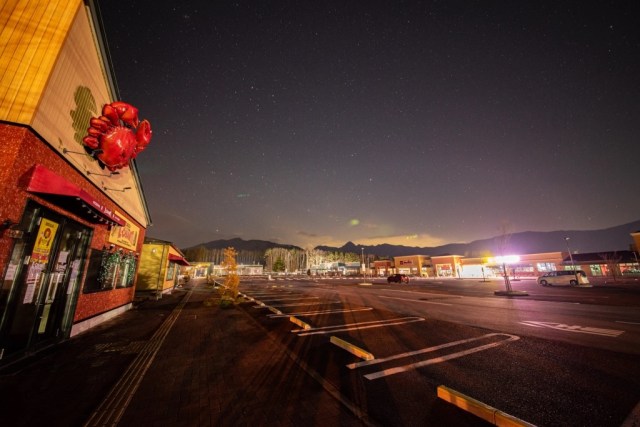
It’s about three kilometers form Sukiya to the park, and the first part of the route takes you by the Forest Mall Fuji Kawaguchiko shopping center. At 1 a.m., it was closed, but there was a casual restaurant open across the street, the second oasis we’d found in two and a half hours of walking. Aside from ourselves, the only people moving around were the drivers of a few modified cars roaring up and down the road, who looked like they might possibly be the same people we’d seen inside Sukiya.
But as we got closer to the park, the streets got smaller, emptier, and darker…
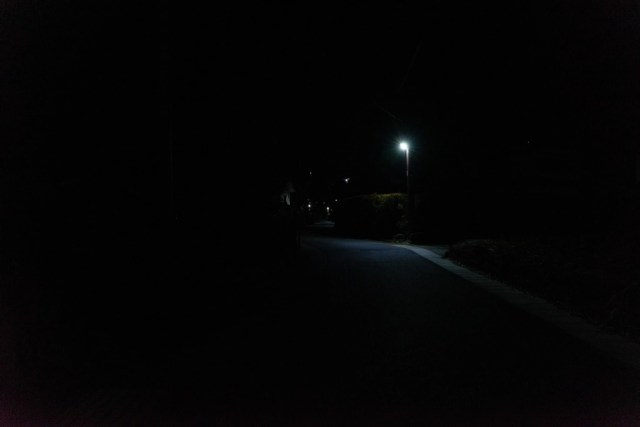
…much darker.
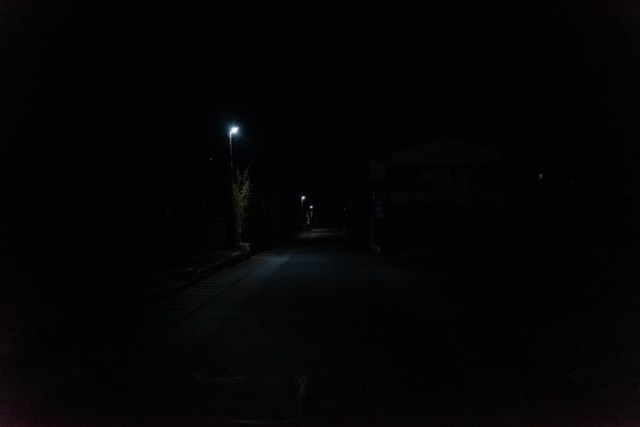
We honestly wish we’d had a flashlight, as more than once during the night we stumbled on an uneven patch of ground we hadn’t noticed in the darkness. We were lucky enough to make it to Yagisaki Park without completely face-planting, though.

Yagisaki Park sits right on the water’s edge, and is a great place from which to gaze upon Mt. Fuji during in the day. It’s pretty much deserted at this time of night, but it also has a different kind of beauty to offer, as the few surrounding sources of light, such as the Kawaguchiko Ohashi Bridge, reflected off the still water, which had become like a black mirror.
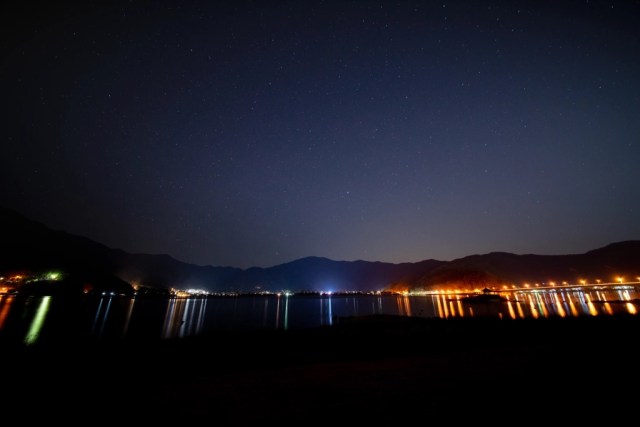
Overall though, there’s far less light pollution than what we’re used to in Tokyo, which allowed us to get some truly amazing shots of the starry sky.
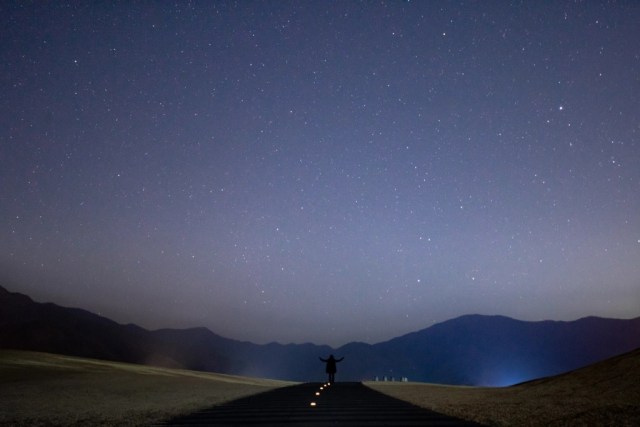
It was now a little after 3 a.m., so we had some time before the first train out of Kawaguchiko Station at 5:03. Since the Kawaguchiko Ohashi Bridge had looked so nice from the park, we decided to stroll over to it for a few more photos.
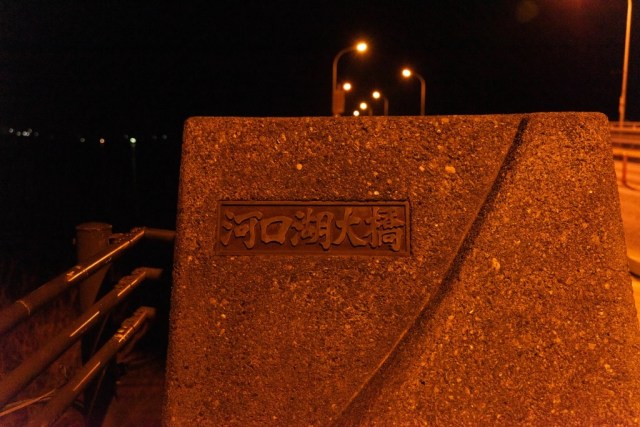
And sure enough, the view from here was lovely as well. As a matter of fact, even though we couldn’t spot it until we looked at the below picture, this is where we got our first glimpse of Mt. Fuji, whose gently sloping base can be faintly made out at the far right.
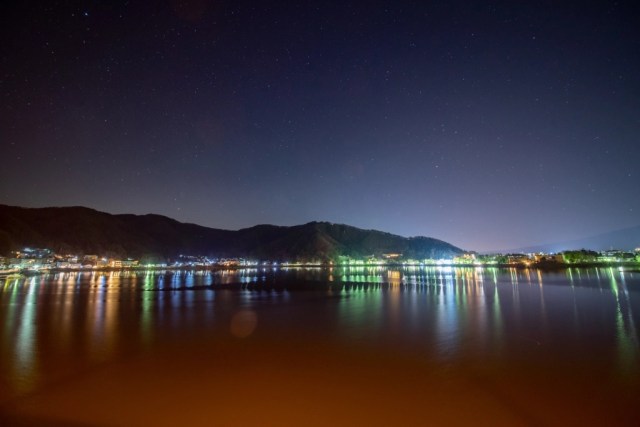
We then plotted out a slightly roundabout route back to the station, so that we’d be able to hop on the train shortly after reaching the entrance.
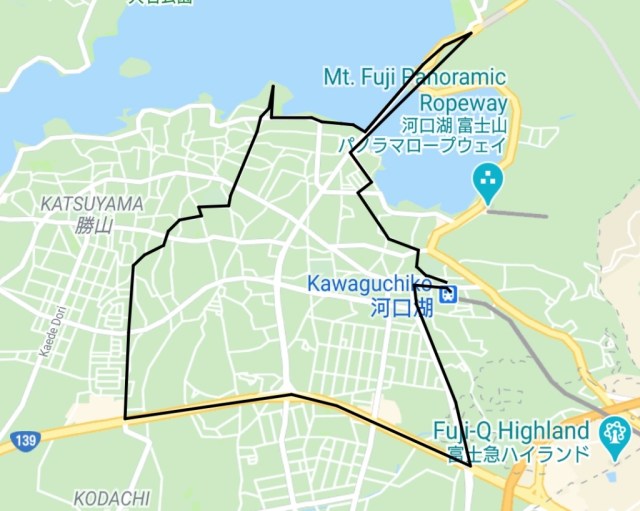
As the sky started to lighten, we felt a twinge of regret that we’d be heading back to Tokyo without seeing Mt. Fuji in all of its visible glory. Still, we’d come all the way here, so at exactly five o’clock, three minutes before the first train of the morning was leaving, we took a few steps back from the station building to snap one last photo of it to commemorate our trip, which is when we suddenly noticed…
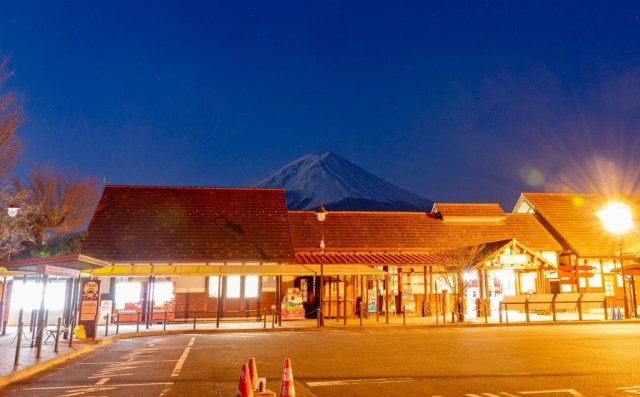
…Mt. Fuji itself was out early to see us off!
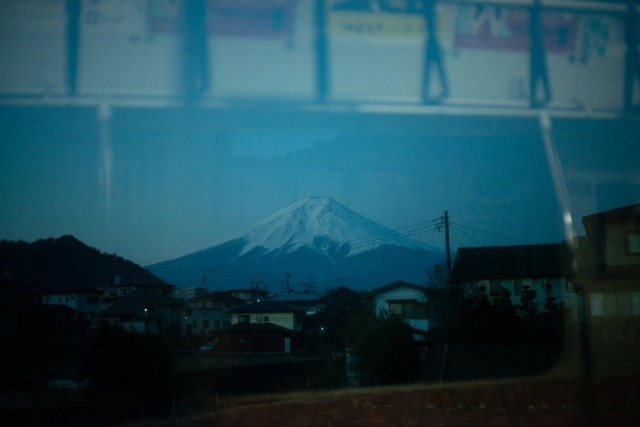
There’s something about seeing Japan’s tallest mountain that puts people in a reflective mood. As we rode back towards Tokyo, we couldn’t help feeling that yes, you can definitely make a case that the Saturday night Tokyo-to-Kawaguchiko train is the worst train to fall asleep on if you’re judging by how far from downtown you’ll end up and how few amenities there are. But on the other hand, we won’t be forgetting our night in Kawaguchiko anytime soon, and next time we find ourselves dozing off, we’ll probably be dreaming of more adventures like this one.
Photos © SoraNews24
● Want to hear about SoraNews24’s latest articles as soon as they’re published? Follow us on Facebook and Twitter!

No hay comentarios:
Publicar un comentario